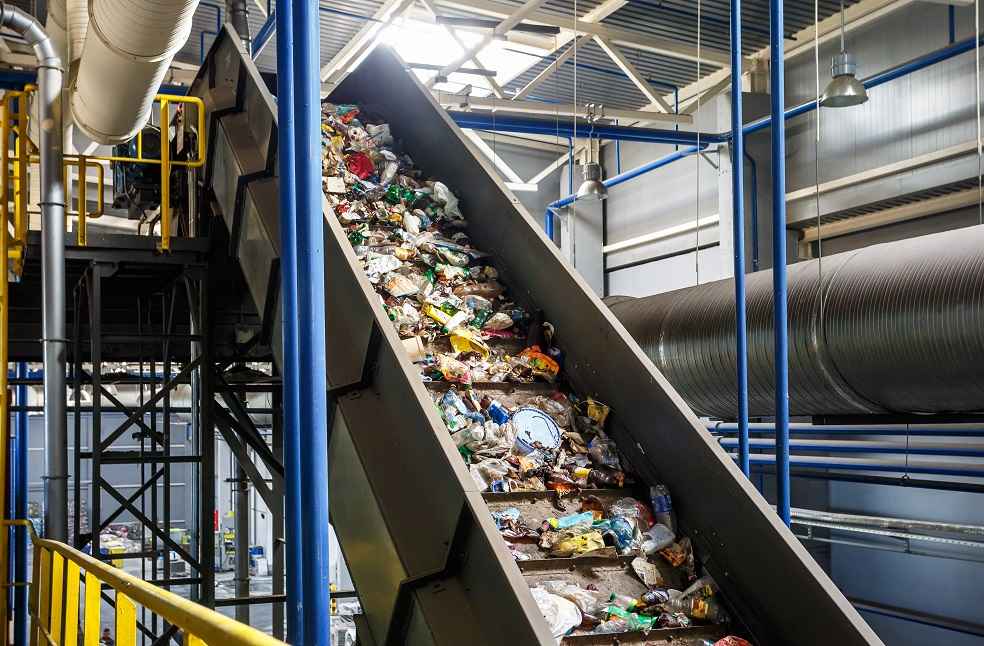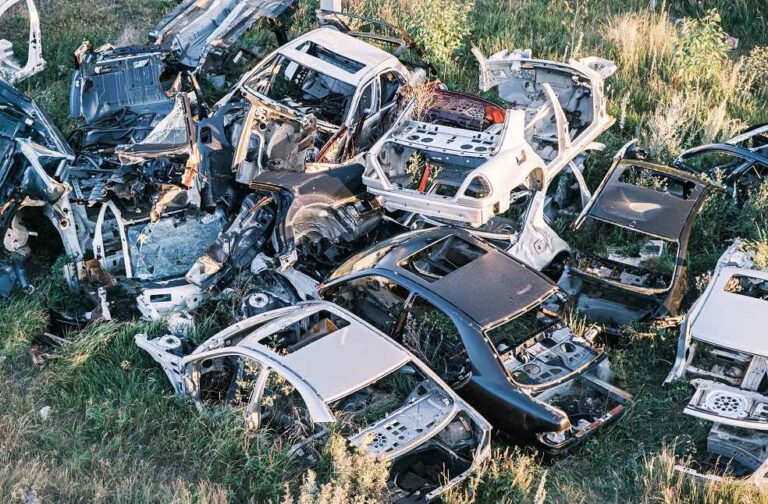The global automotive industry, producing millions of vehicles each year, is a substantial contributor to environmental waste. Alongside vehicles, which generate over 1.5 billion metric tons of carbon dioxide (CO₂) annually, the industry produces considerable waste in the form of hazardous fluids, metals, plastics, and emissions. If not properly managed, this waste can lead to soil, water, and air contamination, posing health and safety risks. With the sector projected to grow from $2.9 trillion in 2020 to $3.8 trillion by 2030, the need for sustainable waste management practices has never been more urgent.
Types and Environmental Risks
Automotive waste falls into two main categories: hazardous and non-hazardous. This waste encompasses byproducts of production, use, and disposal, with the following key components:
- Hazardous Waste: Includes materials that require careful handling due to their toxic nature. Key hazardous materials include:
- Batteries: Each year, 12 million tons of lead-acid batteries are discarded worldwide. Containing lead and sulfuric acid, these batteries can leach toxic chemicals into the environment if not disposed of properly.
- Engine Oil and Fluids: The industry generates over 1 billion gallons of used motor oil globally. When disposed of improperly, just one gallon can contaminate a million gallons of freshwater.
- Antifreeze and Brake Fluids: Often containing ethylene glycol, these fluids can harm aquatic life when they seep into waterways.
- Non-Hazardous Waste: Includes components like plastics and metals produced through manufacturing and vehicle maintenance.
- Plastics: Approximately 25-30% of a car’s weight is plastic, equating to over 1,000 pounds of plastic per vehicle. Annually, an estimated 5.6 million tons of plastic automotive waste enters the waste stream, contributing to the 400 million tons of plastic waste produced globally each year.
- Scrap Metal and Particulates: Scrap metal from the automotive industry contributes to the 1.3 billion tons of metal waste generated globally each year. Particulate emissions from vehicles add to air pollution, with transportation responsible for about 23% of global CO₂ emissions in 2019.
Costs and Consequences

Inefficient waste management impacts the environment and imposes financial and administrative burdens on the industry. Waste disposal fees, compliance with regulations, and fines for improper disposal can add up to millions of dollars per year for automotive companies. For instance, hazardous waste disposal costs can average $1,500 to $2,000 per ton, while improper disposal fines can range from thousands to millions of dollars, depending on the violation’s severity.
Leading Solutions
With growing regulatory and financial pressures, automotive companies are turning to sustainable practices. Here are some of the primary methods being adopted:
- Calorimetry for Plastic and Rubber Recovery: By using calorimetry, waste plastics and rubbers are converted into energy. This recovery process reduces waste, creates an energy source, and minimizes the need for landfills.
- Waste Valorization: This approach involves transforming waste into valuable resources. For example:
- Oil Filters and Coolants: Companies like CHIMIREC, a leader in automotive waste management, recycle used oil filters and coolants, recovering valuable materials while minimizing environmental impact. CHIMIREC alone processes over 40,000 tons of oil and 5,000 tons of coolants annually, significantly reducing the industry’s environmental footprint.
- Energy Substitution Fuels (ESF): In Morocco, CHIMIREC repurposes garage waste like car seat foam as absorbents for ESF production, a practice that supports circular economy principles and reduces reliance on fossil fuels.
- Hydrocarbon Recycling: In Canada, CHIMIREC is pioneering a hydrocarbon recycling process, creating sustainable energy alternatives and meeting the Canadian automotive waste management demand.
Driving Global Change

To reduce CO₂ emissions, the European Union (EU) has passed legislation to phase out the sale of new combustion engine vehicles by 2035. However, with 240 million passenger cars still in use across the EU, automotive waste management remains a priority. In countries like France, where regulations for waste collection and treatment have been in place for decades, companies like CHIMIREC lead the way. The Group collects hazardous waste from over 10,000 garages across France each year, ensuring compliance with stringent EU standards and setting a model for other nations to follow.
Automotive Waste Disposal Wells
Motor vehicle waste disposal wells, commonly found in vehicle repair facilities, receive fluids like engine oil, antifreeze, and brake fluid, which can contaminate groundwater if not properly managed. These disposal wells, often linked to septic systems, are subject to strict EPA regulations under the Class V injection wells category. According to EPA estimates, approximately 20% of these wells pose a groundwater contamination risk in the U.S.
To comply with regulations, facilities are encouraged to:
- Close disposal wells or convert to alternative waste management systems.
- Connect floor drains to municipal sewers when possible.
- Use holding tanks or implement pretreatment equipment to treat wastewater.
These measures have a high implementation cost, with average expenses ranging from $10,000 to $50,000 per facility, depending on infrastructure requirements.
Examples and Recycling Practices

- Used Motor Oil Recycling: Each year, around 1.3 billion gallons of motor oil are consumed in the U.S., with improper disposal polluting rivers, lakes, and soil. Recycling initiatives allow the oil to be re-refined and reused, reducing waste and conserving resources.
- Tire Recycling: Approximately 1 billion tires reach the end of their life annually worldwide, contributing to waste. Recycling tires into materials for rubberized asphalt, playground surfaces, and garden mulch helps reduce this burden. In the U.S. alone, tire recycling efforts prevent 120 million tires from ending up in landfills each year.
- Car Battery Recycling: The U.S. generates 200 million used batteries annually, many of which contain lead and acid. Proper recycling at certified facilities ensures that 98% of a lead-acid battery can be recycled, limiting environmental and health risks.
- Coolant and Transmission Fluid Disposal: Recycling coolant and transmission fluid prevents hazardous substances from contaminating water sources. Proper disposal involves storing these fluids in sealed containers and delivering them to certified recycling centers. The EPA reports that improperly disposed of fluids contribute to 25% of hazardous waste violations at auto repair shops in the U.S.
Building a Sustainable Future
With innovations like calorimetry, hydrocarbon recycling, and valorization, the automotive industry is moving toward a circular economy. Companies like CHIMIREC and regulatory agencies worldwide are paving the way for a cleaner, more efficient approach to waste management. These measures not only address environmental challenges but also provide economic benefits, potentially saving the industry millions in waste disposal costs and regulatory compliance.
By adopting these sustainable practices, the automotive industry can continue to grow responsibly, reduce its environmental impact, and support global efforts to protect our planet.
MOST READ | VinAI Unveils DrunkSense: AI-Powered Drunk Driving Detector at InCabin 2024





